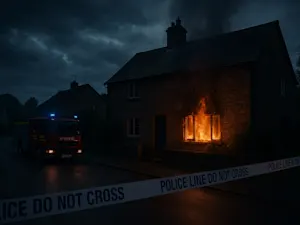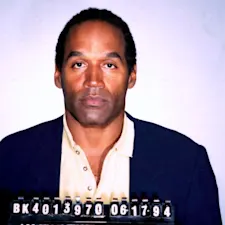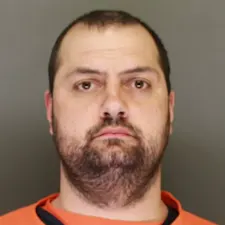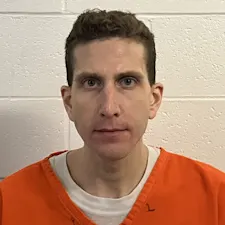
In Cold Blood: The Gruesome Crimes of the 'Ice Cream Killer'
Estibaliz Carranza might have seemed like an ordinary woman managing an ice cream parlor in the Meidling district of Vienna. Yet beneath the friendly, unassuming exterior lay a web of deadly secrets that would horrify Austria and attract international attention. By the time the truth came to light, Carranza had already become one of Europe's most infamous criminals — forever known as "The Ice Cream Killer."
Early Life and a Drive for Stability
Born in 1978 in Mexico and raised in Spain, Carranza's life was shaped by early turbulence and the need for stability. Her family fled Mexico when she was a child due to threats against her father, a journalist. Settling in Spain, Carranza was known as a bright and diligent student. She mastered several languages and excelled academically, graduating with high honors from her university. But despite her achievements, she seemed haunted by insecurity and longing for a traditional family life.
As a young woman, she moved to Germany to improve her job prospects. In her early 20s, Carranza met Holger Holz, a German man 12 years her senior who quickly became enchanted by her beauty and charm. Their relationship blossomed, and soon, they were married. For Carranza, who dreamed of starting a family, it felt like her life was finally coming together. But soon after the wedding, she discovered that her idea of family life is far from Holz's reality.
The Collapse of a Marriage
Carranza's hopes for a harmonious home life with Holz were dashed almost immediately. Holz had become deeply involved in the Hare Krishna movement, a spiritual devotion that quickly consumed his time and energy. He dismissed Carranza's desire to start a family, rebuffing her pleas for intimacy and belittling her appearance. Despite her efforts to change her looks and please him, Holz was often verbally abusive, criticizing her looks and ridiculing her struggles with the German language. These conflicts grew as they relocated to Vienna, where Holz had arranged for Carranza to run a small ice cream shop, Schleckeria.
Living together above the ice cream parlor, Carranza became increasingly isolated. Her marriage continued to crumble as Holz spent little time at home and less helping in the shop. At this point, Carranza turned to Manfred Hinterberger, an ice cream machine salesman 20 years older than her, who offered companionship and support. Their friendship soon became a romantic affair, and Carranza became desperate for love and increasingly resentful toward Holz. Even after divorcing, Holz continued to live with Carranza, refusing to leave their shared residence. The relationship had soured so severely that Carranza fantasized about taking her husband's life, a fantasy that would soon become a chilling reality.
A Deadly Act of Desperation
In 2008, Carranza's anger reached a tipping point after another argument with Holz. As Holz sat at his computer, she retrieved a .22-caliber pistol she had purchased and shot him three times: twice in the back of the head and once in the temple. Overwhelmed but determined to cover her tracks, Carranza embarked on a grim mission to hide the evidence. She dismembered Holz's body with a chainsaw and stored the pieces in a freezer at the ice cream shop. Later, she encased the remains in buckets of cement, hiding them in the shop's basement.
Carranza carried on with life for two years as if nothing had happened. She continued managing the ice cream parlor, maintaining an outwardly everyday existence while keeping her grisly secret beneath the shop. Though her relationship with Manfred Hinterberger flourished after Holz's death, Carranza's troubles were far from over. Soon, she would repeat the same deadly cycle — this time with Hinterberger as the victim.
A Second Murder and Deeper Deception
Initially, Carranza's romance with Hinterberger brought her solace. However, as time passed, his behavior began to mirror Holz's neglect and mistreatment. Hinterberger's frequent affairs and refusal to take their relationship seriously enraged Carranza, who desperately wanted commitment and stability. She discovered flirtatious text messages on his phone, along with evidence of an online dating profile, all of which confirmed her fears of his infidelity. Once again, Carranza felt betrayed, rejected, and trapped in a relationship she could not control.
One evening in 2010, after returning home from a night out, she attempted to confront Hinterberger about his unfaithfulness, but he dismissed her concerns and went to bed. Carranza, seething with rage, reached under the mattress for the exact pistol she had used on Holz. In a moment of cold calculation, she shot Hinterberger four times in the back of the head while he slept. With an almost ritualistic precision, she proceeded to dismember his body, freezing the parts and later embedding them in concrete alongside Holz's remains in the basement of the ice cream shop.
The Discovery that Shocked Vienna
Carranza's macabre secrets might have stayed hidden indefinitely without a chance discovery in 2011. Maintenance workers, hired to perform routine repairs in the building, stumbled upon human remains encased in concrete in the cellar. Shocked and horrified, they immediately alerted the authorities. Investigators quickly identified the remains as those of Carranza's ex-husband Holz and former lover Hinterberger, leading to an intense search for the woman who had been living a seemingly ordinary life in the heart of Vienna.
Aware that the authorities were closing in, Carranza fled to Italy, where she attempted to escape justice while two months pregnant with a new partner's child. However, her escape was short-lived. Police tracked her down, and she was soon extradited to Austria, where she faced charges for the murders. The media dubbed her the "Ice Lady" or "Ice Cream Killer," nicknames that highlighted the chilling nature of her crimes and her seemingly unflappable demeanor.
Trial, Confession, and a Nation Captivated
Carranza's trial drew massive media attention, filling the courtrooms with onlookers and press alike. During the trial, she confessed to both murders, describing the humiliation and isolation she had felt at the hands of her victims. She spoke of Holz's cruelty and Hinterberger's betrayal, attempting to justify her actions by framing herself as a victim. However, the public, the press, and the courtroom were captivated by the calculated nature of her actions — murder, dismemberment, and an elaborate cover-up that allowed her to carry on with life as if nothing had happened.
Prosecutors portrayed Carranza as a "ticking time bomb," capable of extreme violence when faced with rejection or disappointment. Court psychological studies determined she had severe pathological personality disorders, and they concluded that she posed a significant threat to others. The court psychiatrist warned that she was highly likely to kill again if given the opportunity, a chilling testament to the threat she posed.
Despite her defense's efforts to argue for leniency, Carranza was sentenced to life in a secure mental institution.
Aftermath and Cultural Impact
Carranza's notoriety did not fade after the trial. Public fascination with her story led to a best-selling memoir, "My Two Lives: The True Story of the Ice Lady," co-written from her prison cell with journalist Martina Prewein. In her memoir, Carranza attempts to explain her actions, detailing the abuse and disappointment she endured, but also admitting her guilt. The book's release reignited public interest in her case, with some readers finding sympathy for her plight while others condemned her calculated brutality. All proceeds from the memoir go to her son, who now lives with her parents in Barcelona.
The story of "The Ice Cream Killer" has also captivated filmmakers, with reports that multiple studios, including Hollywood production companies, have shown interest in adapting Carranza's life into a film. Although there is no official confirmation of a movie in production, her story intrigues those drawn to tales of deception, violence, and betrayal hidden behind ordinary lives.
Reflections on Carranza's Crimes
In the years since Carranza's trial, her crimes have cast a long shadow over Vienna. Once-familiar neighbors now reflect on the chilling secrets hidden beneath her parlor's floor, feeling a deep sense of betrayal. Carranza's story isn't just one of double murder; it's a haunting reminder of the darkness that can lurk within the most ordinary lives. Her case raises difficult questions about the roots of extreme violence and whether such acts can ever be fully understood or forgiven. Today, her story endures as a macabre chapter in Austria's history, reminding us that even the most familiar faces can conceal unimaginable horrors.
References: Ice Cream Killer Memoirs | 'Ice-lady' sentenced to life in mental institution for grisly dismemberment of ex-husband and lover| Ice Cream Killer's memoirs 'to be turned into a film': Hollywood studio said to have bid for story of woman who shot two lovers and chopped them up with a chainsaw | 'Ice lady' killer buried husband, lover in Vienna cellar
























